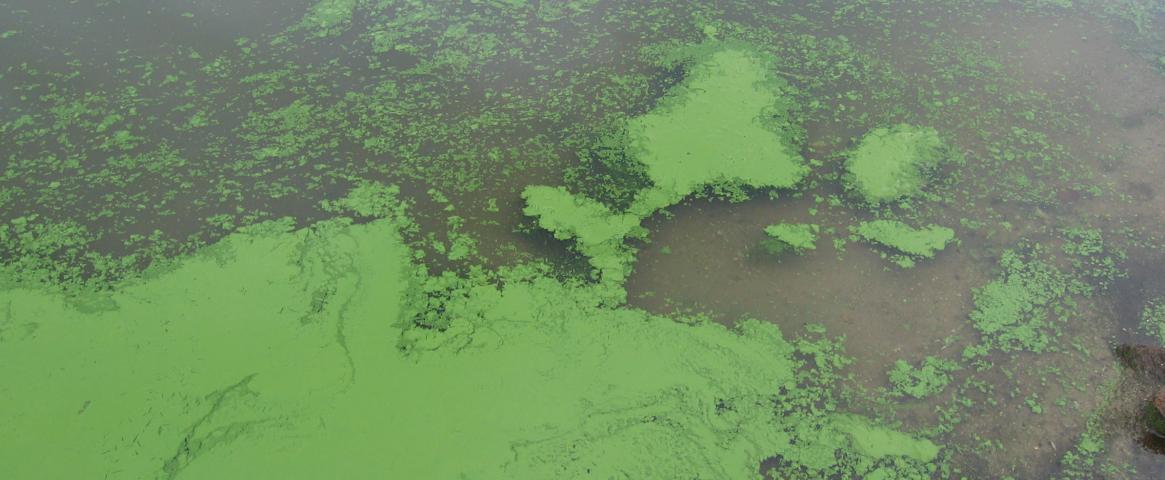By Grace Wickerson. Mentored and edited by Betsy Ladyzhets.
Toxins in water supplies that increase rates of cancer. Highly lethal pathogens untreatable by current antibiotics. These issues are set to impact 634 million people who live in low-level coast zones and nearly 2.4 billion people who live within 60 miles of an oceanic coast. Yet, health systems are not prepared for these growing threats.
Health care practitioners, researchers, policymakers, and the public are banding together to study the ocean connection to public health and find ways to address and mitigate these emerging risks. Leaders from NSF/NIEHS Centers for Oceans and Human Health (COHH) presented their interdisciplinary collaborative work at a February 20th panel at the American Association for the Advancement of Science annual meeting.
Chemical and biological risks are on the rise due to climate change, with algal blooms being one of the most substantial threats. As sea levels rise, there is more mixing of freshwater and saltwater, leading to more opportune conditions for algae blooms; after death, these blooms emit toxins into the water, exposing humans who live nearby. Rising ocean temperatures are also enabling algae blooms to expand poleward from the tropics, affecting new ecosystems and communities. Algae such as Alexandrium have spread as far as the Arctic, exposing vulnerable indigenous communities to novel toxins that harm their health.
“We are affected by climate change whether you believe it, or you don’t,” said University of South Carolina (USC) immunologist Saurabh Chatterjee. Leading the Toxicology core of USC’s COHH, Chatterjee is helping clinicians to understand the effect of environmental toxins and create treatment paradigms for the problems that lie ahead.
His work has shown how increases in exposure to microcystin, a toxin from algae blooms, is altering the human microbiome, negatively affecting human immune systems, and escalating antibiotic resistance especially with co-infections of other ocean pathogens. Such toxins put coastal communities at increased risk of new bacterial outbreaks like Vibrio that cannot be treated by current antibiotics.
Communities living aside inland freshwater lakes are not safe from these health impacts: warming waters and larger storms yielding more nutrient runoff have led to more algae blooms and toxin release into drinking water supplies. One such bloom in 2014 shut down the entire water supply in Toledo, Ohio for three days, affecting 400,000 people living alongside Lake Erie.
“Only 0.3% of funding for adaptation goes to health systems,” said Bowling Green State University microbiologist George Bullerjahn. As an expert in cyanobacteria, Bullerjahn was catalyzed to act after the Toledo water crisis; he began to consider the health impacts of the microorganisms he had dedicated his career to studying.
Bullerjahn now leads the Great Lakes Center for Fresh Waters and Human Health, bringing together scientists, stakeholders, and the public to develop solutions for the region. These include reducing nitrogen runoff, enabling communities to engage in citizen science to monitor blooms, and training doctors to be more responsive to the downstream health impacts of toxin exposure. His work has shown him the critical need for scientists to engage in public communication and policy, especially around issues that systemically impact human health.
“What’s a better thing to learn about than how microbiologists can contribute to the greater good,” said Bullerjahn.
Another scientist modeling community engagement is physician and communication lead of the Greater Caribbean Center for Ciguatera Research, Jennifer Pierce, who works on informing the public about the intersections of health, oceans, and climate change.
Pierce emphasizes the importance of researchers listening to those closest to the end problem. Communities directly impacted by climate change are often left out of the conversation about solutions. This can make it more difficult to understand the full scope of the problem as well as align stakeholders on goals to mitigate climate change.
“People are so engaged in the health of the waters they live on,” Pierce said. Understanding someone’s values and priorities helps researchers know what solutions will work and what solutions will fail.
Through building connections across public health, climate science, policy, and community engagement, scientists, researchers and physicians are showing just how vital protecting environmental health is to protecting human health.
“Our lives depend on our ecosystems and our oceans,” Pierce said.
Grace Wickerson is a Ph.D. student in Materials Science and Engineering at Northwestern University. Their research focuses on the design and implementation of therapeutic medical devices for acute and chronic diseases that dissolve in the body after use. In addition, they are also working on public health policy efforts that address systemic racism in healthcare spaces and lack of access to the high-tech interventions they work on. Read more of their work at their website gracewickerson.com.
Image: Algal bloom in Lake Binder, Iowa [Source: Flickr Creative Commons © eutrophication&hypoxia

